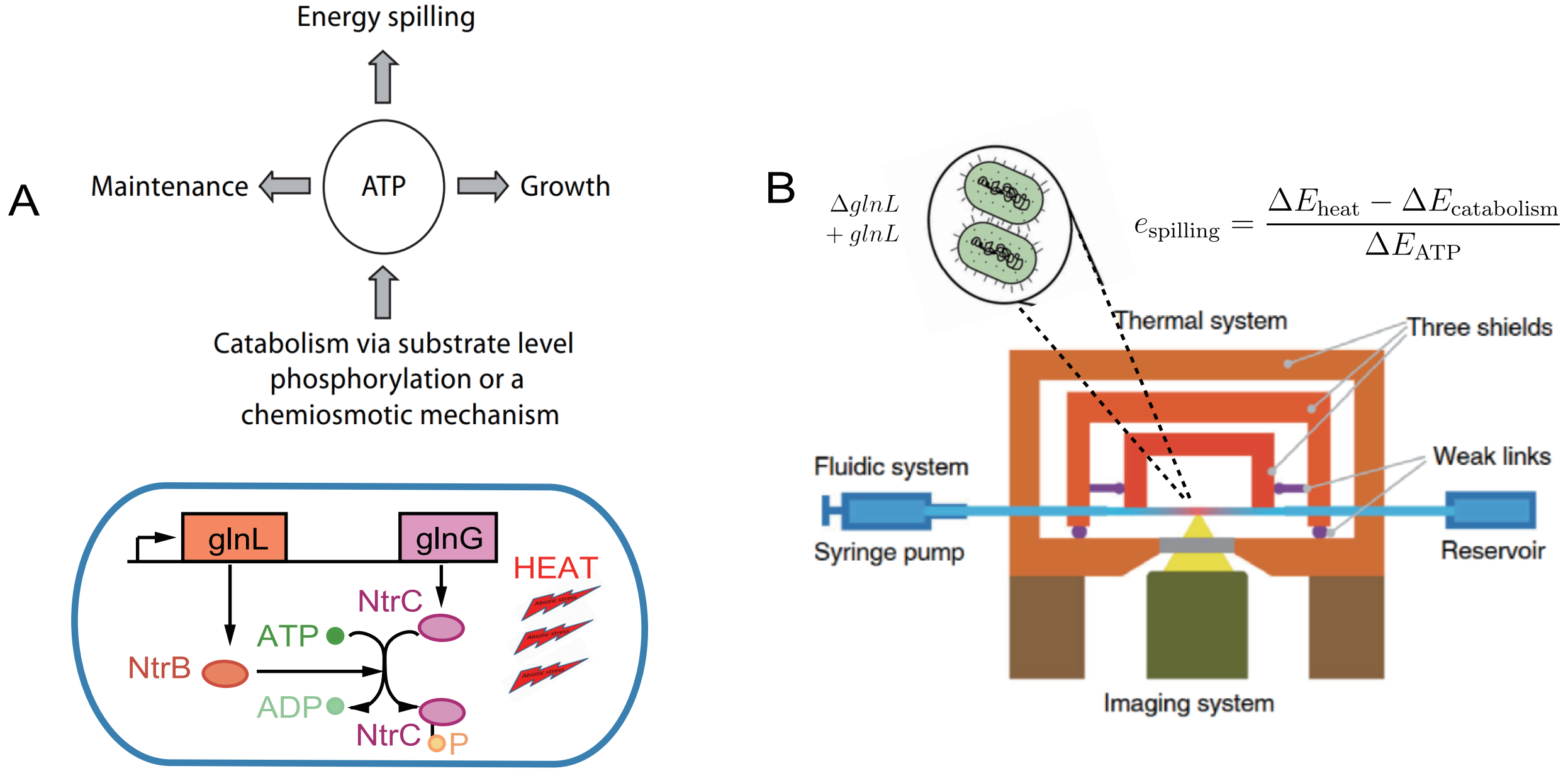Catabolism yields ATP and intrinsically generates metabolic heat. A cell uses ATP to drive cellular mainte- nance and growth. For years it was assumed that bacteria utilizes ATP efficiently, meaning biomass production in growth is efficient from standard biosynthesis. However, observed biomass production is 3-to-10 fold or more lower than predicted.Why do bacteria spill energy and deliberately dissipate ATP? To understand the varying growth efficiency, we need to measure and calculate ATP generation, biomass production and heat generation accurately. Therefore, we utilize genetic engineering techniques that induce high heat production in E.coli and measure heat production via high resolution temperature-sensitive nanoprobes. Heat production and heat-mediated interactions in microbial populations. A. Potential energy utilization pathways and engineerd high heat-producing E. coli bacteria. B. Demonstration of bacteria co-culturing and heat-measuring testbed. High heat-producing and low heat-producing bacteria strains are co-cultured. Using temperature sensitive nanoprobes, we should be able to measure the heat distribution in the consortia.
Heat is not just a byproduct from catabolism. Metabolic heat can alter local temperature, and microbes differ on their optimal survival and growth temperature. A microbe that raises the local temperature closer to its own optimum gains a growth advantage over other competitors. Several examples in natural microbes suggest excess heat is a public good that benefits neighbors. Some organisms increase dark pigment to raise cellular temperature. Some other microbes contribute heat by excess thermogenesis and spend ATP on heat production. Groups or populations can retain heat by aggregation and by insulation, for example, forming biofilms. A new concept ”thermal signaling”, in which temperature variation within biological cells acts as a signal in a cascade of intriguing biological events, arises as an interesting topic for us. Questions are: 1. within the population, how are they cooperate since heat generators pay the cost of production and others exploit the public heat (heterogeneity)? 2. How to use heat as a competitive weapon, maybe also defend against invading bacteria?

